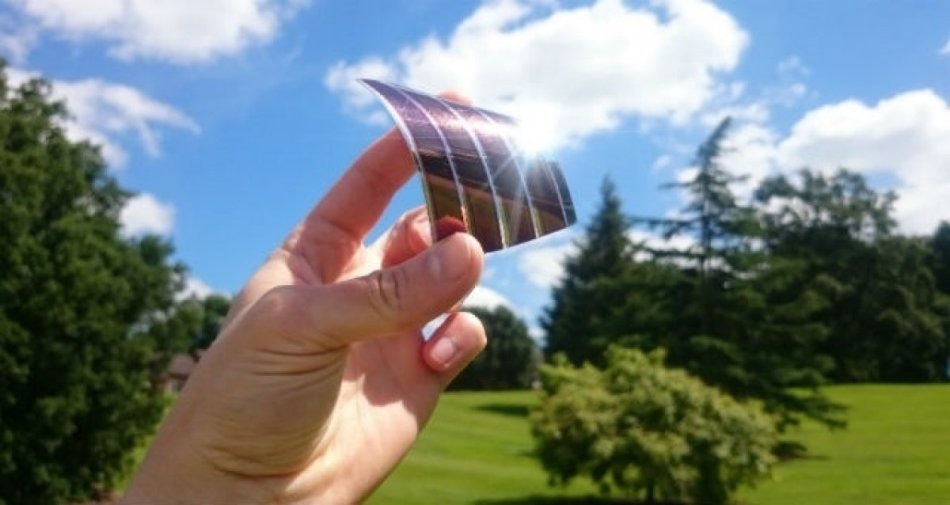Jun 25 2019
According to scientists at the University of Surrey, their innovative tin-based perovskite solar cell can possibly overcome barriers and advance the development of solar panel technology. This would ultimately help the United Kingdom to reach its 2050 carbon neutral objective.
 (Image credit: University of Surrey)
(Image credit: University of Surrey)
As countries search for ways to come to terms with climate change, solar cell technology has become increasingly popular as an eco-friendly energy alternative. Silicon is used as the light absorber in many commercially available solar panels and it is this element that makes the panels costly, heavy, and rigid.
A comparatively new group of materials called perovskites are not only economical but have also been shown to be more efficient at absorbing light when compared to silicon. Perovskites are different from silicon and can be developed using solution processable “inks” that enable the fabrication of flexible, efficient, and thin (semi-transparent) solar panels using cost-effective materials and, at the same time, enable the fabrication of solar cells through a roll-to-roll printing process.
Such technology facilitates a wide range of low-cost solar panel options, ranging from window panes to on-wall panels. However, in spite of the remarkable performances of perovskites solar cells, toxic lead are present in them as an ingredient—which has spurred environmentally conscious researchers to investigate means to lower the toxicity in the technology without compromising on their excellent efficiency.
In a study recently reported in the Journal of Materials Chemistry, scientists from Advanced Technology Institute (ATI) at the University of Surrey describes how they have created a solar cell that has 50% less lead with the more harmless tin. By adjusting their tin-based solar cell, the investigators successfully developed a product that is capable of absorbing infrared light in a comparable way as silicon cells.
The team also discovered that when lead-only cells are stacked with the ones blended with tin, it can promote power conversion results that surpass those of the power cells fabricated only from silicon.
We are starting to see that many countries are treating the threat of climate change with the seriousness it deserves. If we are to get a handle on the problem and put the health of our planet on the right track, we need high-performing renewable energy solutions. Our study has shown that tin based perovskite solar cells have an incredible amount of potential and could help countries such as the United Kingdom reach its target of becoming carbon neutral by 2050.
Indrachapa Bandara, Study Lead Author and PhD Student, Advanced Technology Institute, University of Surrey
Professor Ravi Silva, director of the ATI at the University of Surrey and corresponding author, stated that “Using solar panels will ultimately allow each of us to contribute to not just solving the energy crisis, but hugely reducing the impact of fossil fuels on climate change. Tin-based perovskite photovoltaics is an upcoming technology that promises major improvements to environmentally friendly and efficient solar panels at a low cost. Our new findings point researchers in the field to gaining higher efficiencies while reducing the toxic impact of the absorber materials.”